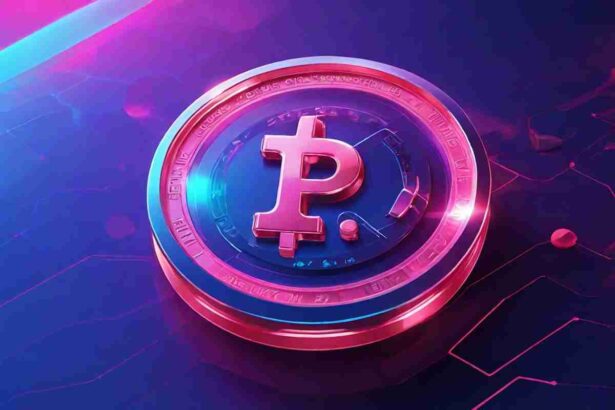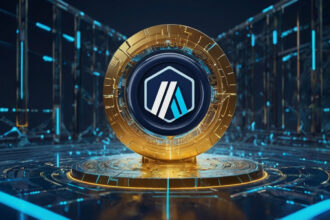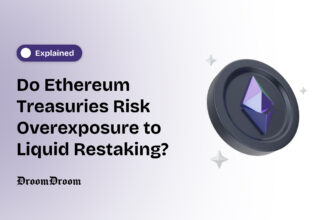Polkadot 2.0 aims to embrace the procurement of cores. What are cores?
Polkadot 2.0 defines the DOT blockchain as a multi-core system, where instead of leasing out blockspace, (as it was on Polkadot 1.0) developers can now sell or buy CoreTime -which is Polkadot 2.0’s equivalent of blockspace.
Coretime is a way for developers to scale blockchain space and sell it out to other innovators, in addition, this model comes with a pay-as-needed feature so that no resources remain idle.
Selling Coretime, or ‘blockspace’ will help unlock capacity, improve resource management, and unlock innovation.
This marks an important phase both for Polkadot and the overall industry, a phase where bulk Coretime can be traded as a commodity. This means, there is no waste and there is no large expense when acquiring blockspace.
Hence, eliminating barriers to entry when building and deploying decentralised applications, and levelling the playing field for innovators who rely on chains to create robust smart contract solutions.
Read this article to understand the role of smart contracts in DEFI and why they should be robust’
One would therefore not have to undergo the costs and effort of building and maintaining a large chain, they just need to buy space.
According to Gavin Wood, Polkadot 2.0 and its proposed changes aim at not only being another cryptocurrency but also serving as a frictionless gateway for the increasing numbers of Web 2.0 businesses shifting to a Web 3.0 model.
What is Polkadot 2.0?
Polkadot 2.0 aims to create a new system for allocating blockchain space. According to Wood, this system adds more flexibility to the existing model by allowing developers to purchase blockspace as required. The proposed upgrades on the Polkadot 2.0 model also demonstrate that they will make Polkadot’s ecosystem more viable for Web 2.0 businesses who want to achieve a decentralized framework.
The main idea behind the evolution of Polkadot 2.0 revolves around introducing elastic cores. These elastic cores should cater to changing computations and frameworks. For instance, parachains function just like a core inside the CPU, but one that lies within the Polkadot supercomputer.
By introducing elastic cores, the new Pollkadot 2.0 system allocates resources by responding to real-time requirements. By doing so, Polkadot’s goal is to significantly improve efficiency and boost reliability across the entire DOT ecosystem.
For a long time, Polkadot users have been purchasing the time required for validating transactions and arriving at consensus as Blocktime. Polkadot 2.0 has another way it wants this to be done.
Instead of the users purchasing blocktime using a one-time fee, Polkadot 2.0 users on the ecosystem purchase blocktime as coretime through auctions and a pay-as-you-go fixed fee. Hence another difference between Polkadot 1.0 and Polkadot 2.0 revolves around the allocation of Coretime. How does this make a difference?
Gavin Wood in his June 2023 speech at the Decoded Conference said the new system for allocating blockchain space and time will bring more flexibility. The current model supports the purchasing of block space in bulk or on demand. As per Wood, the new Polkadot has its attention on introducing resilient computing cores to meet the high demand for adaptive computing resources across Web 3.0.
Polkadot’s existing parachain auction structure has a relatively static parachain design. For example, a user has to acquire two years of stable Blockspace even if they need it for a week and lightweight purpose. The on-demand structure for Polkadot 2.0 meets the demands of deploying lightweight Web 3.0 applications.
How does the new model achieve this anyway? The team at Parity Technologies subdivided Parachains into parathreads. Using the parathreads, developers can subscribe to the relay chain for core services based on their needs and actual usage.
Thereby enabling these developers to have the same access to quality blockspace regardless of their ability to purchase what would have been a premium plan on the old Polkadot. As you see, this design achieves two things: aggressively cuts down the cost of computing resources, reduces the operation costs of running a parathread and accelerates the lifecycle of deploying a decentralized application.
DFG, an investment firm focused on Web 3.0 and the blockchain decoded Gavin Wood’s speech about the new blockspace model and came up with the following illustration. You can access it in their article ” Magnet: A New Smart Contract Hub for Mass Web 3.0 Adoption”
Source: DFG
According to DFG, Magnet is among the first DEFI projects to leverage the power of Polkadot 2.0’s elasticized on-demand Coretime. For this reason, the project has managed to realize more reasonable, economical and equitable resource allocation on the Polkadot network.
This new model for allocating blockchain space is not only economically viable for lightweight application demands but also meets the needs of specific long-tail users such as community developers, researchers, students and blockchain ethusiastes.
See the table below and understand its summary of how fixed slot leasing has changed from Polkadot 1.0 to Polkadot 2.0. Particularly in the introduction of a more dynamic, more tradable Coretime asset. Which has brought with it full customization and flexibility when deploying decentralized applications.
| Coretime Allocation in Polkadot 1.0 | Coretime Allocation in Polkadot 2.0 | |
| Coretime Allocation Method | Slot leasing mechanism | Coretime is an accumulative and tradable asset |
| Duration | Fixed tenure ( 6 – 24) months | Flexible and customizable |
| Parachains Access | The network grants specific slots | You can purchase it and/or even sell it |
| Method of Procurement | Auctions for slot leasing | Bulk acquisition and purchasing are instant |
| Mechanism Evolution | Coretime is fixed, cannot be traded and cannot be transferred | Coretime has evolved into a tradable asset |
| Flexibility | Flexibility is limited for slot allocations. | Flexibility is enhanced, and use is customizable |
The new model also has a positive impact on Polkadot’s DOT tokens. By reducing the length of Lockup periods, the new model will increase DOT’s liquidity. Additionally, Polkadot will now become more accessible and affordable across all segments of developers. Thereby fostering innovation, growth and empowerment in Web 3.0.
Polkadot’s Core Components: What are the Key Components of the Polkadot Ecosystem
To completely understand what Polkadot 2.0 is, a basic understanding of the Polkadot Network is necessary. In this section, I will teach you the key components of the Polkadot Network that make it effective. There are three main components:
Relay Chains
The Relay Chain is the heart of the Polkadot Blockchain. This component supports communication between parachains and also enhances the security and safety of the network. In simple words, the relay chain is the main blockchain.
Parachains
Think of Parachains as sidekicks of the main blockchain, each of them represents different sets of projects across the Polkadot ecosystem. Parachains act as hosts for decentralized applications (DApps) and other blockchain-based projects. What sets parachains apart and makes them unique is their adaptive and dynamic nature. In simple words, parachains are flexible and can change to quickly adapt and fit the needs of the application they are hosting.
For instance, parachain A can support a large number of transactions at high speed and effectively. This parachain would be suitable for a decentralized exchange or a liquidity pool.
Another parachain B has some more extra features such as compatibility with the Ethereum Virtual Machine (EVM), can support WebAssembly (WASM) contracts and can facilitate communication between decentralized finance (DEFI) applications using cross-consensus messaging (XCM) technology. One such para chain that fits the specification of the Parachain B is Astar Network.
⚡Polkadot 2.0 will reduce the token lockup periods and allow more DOT to circulate.
Polkadot 2.0 is designed to meet the emergent needs of developers and users in the Web3 ecosystem. It will make Polkadot more accessible, affordable, and attractive for innovation. pic.twitter.com/PN9Ao5UStm
— J .DeFi (@LordofDeFi) October 23, 2023Bridges
Bridges are the link between the Polkadot network and other blockchain networks. You might have heard somewhere that Polkadot came to kill Ethereum because it could facilitate communication between different blockchains. That’s true, but for the part of killing Ethereum and not burying the hatchet, that’s debatable another day.
Nonetheless, bridges are part of Polkadot’s network that facilitates interconnection between Polkadot and external chains.
What’s the importance of a bridge and why is it necessary for blockchains to communicate with each other? When building a dApp, a developer might face the need to utilize data from another blockchain.
Inherently, blockchains cannot communicate with each other and that is by design. In such a case where a developer is building a project that utilizes another blockchain application’s data, a bridge is necessary. Polkadot’s bridge component makes this possible by optimizing communication and shared data.
This is not applicable only to data-sharing. A suitable use case for Polkadot’s bridge is a DEFI investor who wants to transfer assets from one blockchain to another. Polkadot’s XCM messaging technology enables this communication. However, users can also rely on a centralized exchange to transfer assets across different blockchains.
Meanwhile, centralized exchanges could also be using Polkadot’s bridge XCM messaging format to facilitate these conversions. Just because you cannot see that on your frontend, does not mean it is not happening.
However, Polkadot’s goal was to eliminate third parties when doing such asset migrations. In such a way that one could achieve asset migration via a decentralised exchange such as Uniswap.
Being Layer-0 is Polkadot’s Competitive Advantage
Polkadot is a layer-0 blockchain. This means builders can deploy other blockchains on top of the Polkadot network. By design, layer-0 blockchains provide a structure that enables developers to create their own chains. When such blockchains share the same layer-0, they can easily communicate with each other even when they are sharing different technologies.
Layer-0 is a competitive advantage for Polkadot Network compared to most chains which generally operate in isolation. Thereby making it difficult and resource-intensive to communicate with each other.
For this reason, blockchain developers who come to Polkadot are looking to create applications that can easily communicate with each other smoothly. Again, Polkadot Network’s governance lies in the hands of DOT token holders. The network introduced its democratic governance model recently. Dubbed OpenGov, the model gives token holders a say in the evolution of Polkadot through voting.
The DOT Token: Polkadot’s Native Currency
One of the roles of DOT tokens centres around governance. Holders of the DOT token possess the ability to actively engage in network governance proposals. This role is impactful as it encompasses pivotal decisions like network upgrades and fee adjustments. This participatory aspect stands as a foundational pillar of Polkadot’s long-term sustainability.
By empowering DOT holders to have an impact on network operations and its governance, Polkadot fosters a transparent and democratic governance structure that not only respects its holders but upholds fairness.
Furthermore, DOT tokens serve a vital operational function for enhancing network security and facilitating transaction processing through the staking mechanism. Nominators employ a portion of their DOT holdings to select validators, individuals responsible for validating transactions and appending blocks to the blockchain.
Their involvement in this process is rewarded with additional DOT tokens, thereby incentivizing their valuable contributions to the network’s operational excellence.
This operational dimension is of paramount importance for the everyday operation of Polkadot. The use of DOT tokens is instrumental in providing a secure and efficient platform for developers to construct their applications.
DOT tokens are also a vital component of slot auctions. The current Polkadot Blockspace auction model enables projects to secure a parachain by committing DOT tokens. This process as we know it, is relatively simple and straightforward: in an auction, the project offering the highest number of DOT tokens gains access to the parachain slot. Projects can either use their own DOT holdings or employ a crowd loan to gather DOT from their communities and supporters to bid for a parachain slot.
Participating projects essentially lock DOT tokens for collateral in an auction for the entire duration of the lease. As a result, a project cannot use these DOT tokens for any other purpose during this period.
Once the auction is finalized, the winning project can connect its parachain to the Polkadot Relay Chain. Afterwards, the parachain becomes operational and gains the advantages of Polkadot’s scalability features and network security. It’s worth noting that the slot durations can take up to 2 years maximum.
Conclusion
In conclusion, the anticipated success of Polkadot 2.0 is poised to enhance the value of DOT tokens. This is primarily due to the increased demand for DOT tokens required for Coretime acquisition and network fee settlements. Furthermore, users can sell their surplus Coretime, potentially driving up the secondary market value of DOT tokens.
Additionally, the growth of decentralized finance services on Polkadot offers earning opportunities for DOT holders, further boosting the token’s utility, value, and liquidity. The revenue generated from Coretime sales contributes to the Polkadot Treasury, with DOT tokenholders having a say in its allocation through OpenGov. The flexible nature of Treasury spending, along with periodic token burning for unallocated funds, introduces a deflationary aspect to DOT, balancing its nominal inflationary characteristics.
While these factors are significant, it’s crucial to consider broader market dynamics, the overall adoption of the Polkadot network, and forthcoming developments like the introduction of Polkadot 2.0 when assessing the future value of DOT tokens.




















